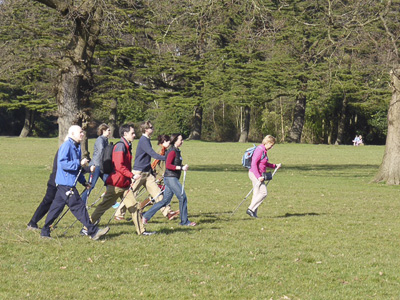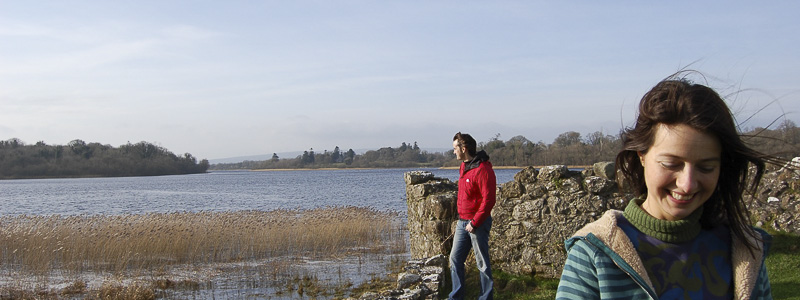By Malcom Ward
(in Volume 25)
 C=EM2 – With apologies to Albert Einstein
C=EM2 – With apologies to Albert Einstein
In Wales there has been a huge amount of activity in the environment sector during the last decade or more with food co-ops, box schemes, growing projects, community walking schemes, outdoor activity programmes, exercise referral schemes, environmental clean-up schemes, forestry skills, care farms, forest schools, wildlife gardening, churchyard maintenance and BIG Lottery projects provided by Ramblers, Natural Resources Wales (and their predecessor organisations), Play Wales, RSPB, Actif Woods, Valleys Regional Park, the National Parks, the North Wales Outdoor Recreation Forum, Caring for God’s Acre, Wildlife Trusts, Wilderness Minds, Federation of City Farms & Gardens and many more from the voluntary, community, academic, public & private sectors.
So given the well established evidence base for both outdoor exposure and physical activity and health, and a host of initiatives and organisations contributing a lot of time and resources why do we continue to have intractably high levels of physical inactivity and continuingly high rates of non-communicable diseases? Is it that people don’t know, don’t understand or don’t care?
There are elements of all of those things, despite the regular media stories that warn of the dangers of sedentary lifestyles, rising levels obesity, diabetes and mental illness; the costs to individuals and society; and the occasional news items showcasing innovative local projects, the messages remain inconsistent and diffuse. But more to the point, the positive rhetoric promoting the benefits of engaging with nature is often confounded by the realities facing our most vulnerable or disconnected communities.
With rapidly expanding populations globally, the pressing need for more living space accompanied by all the supporting paraphernalia of transport, work, industry and commerce has led to rapid urbanisation, loss of natural habitats and green space compounded by poor planning, pollution, waste and vandalism, all too often impeding access and diminishing expectations for many who cannot or will not venture far from their immediate confines.
Despite the best efforts of many, there are undoubted inequities of access to facilities, transport and information particularly for our most deprived communities. And even when physical access is easy, the spiritual and emotional access is often not there. There needs to be a sense of ownership, commitment & responsibility to engender the feeling of connectedness that underpins our relationship with the environment. Many of the aspirational boundaries in our most deprived communities are defined by physical man-made boundaries, leading to a sense of isolation, disconnectedness and resigned acceptance.
Acknowledging the powerful links between health and the natural environment, the evidence that supports it and the variety and sheer number of organisations, individuals and resources that are actively engaged in promoting this relationship across Wales and the wider world, it then begs the question why there is so little evident population impact? And this is where Einstein comes in.
 Einstein famously proposed that E=MC2 in his seminal ‘Theory of Relativity’ where E represents Energy, M represents Mass and C represents the Speed of Light. I have unashamedly misappropriated Einstein’s theory to propose my own ‘Theory of Relative Activity’ based on the formula C=EM2 where E represents Energy, M represents Mass and C represents Synergy. This is of course a metaphorical rather than a literal nod to the works of Einstein and I apologise profusely to students and academics in the fields of theoretical physics for any unintended slights, but put in layman’s terms the problem at present is there are lots of people (M) doing lots of things (E) but usually in isolation resulting in duplication, confusion and waste; wasted resources, wasted energy and numerous wasted opportunities. There is a lot of activity being generated by well-meaning and often enthusiastic organisations and individuals but within their immediate areas of experience. That’s not to suggest that there aren’t good examples of collaborative working and certainly some sectors are better at it than others.
Einstein famously proposed that E=MC2 in his seminal ‘Theory of Relativity’ where E represents Energy, M represents Mass and C represents the Speed of Light. I have unashamedly misappropriated Einstein’s theory to propose my own ‘Theory of Relative Activity’ based on the formula C=EM2 where E represents Energy, M represents Mass and C represents Synergy. This is of course a metaphorical rather than a literal nod to the works of Einstein and I apologise profusely to students and academics in the fields of theoretical physics for any unintended slights, but put in layman’s terms the problem at present is there are lots of people (M) doing lots of things (E) but usually in isolation resulting in duplication, confusion and waste; wasted resources, wasted energy and numerous wasted opportunities. There is a lot of activity being generated by well-meaning and often enthusiastic organisations and individuals but within their immediate areas of experience. That’s not to suggest that there aren’t good examples of collaborative working and certainly some sectors are better at it than others.
Many walking programmes are developed through collaborations between community organisations and health bodies and/or voluntary agencies but how many are linked to litter-picking projects; or adult education programmes; or community safety initiatives. Similarly, food co-ops operate very well in many communities through strong bonds established between local communities, the voluntary sector and the local councils.
Yet there are few if any examples of where food co-ops have linked to food banks; or to care farms; or to ‘Meals on Wheels’ services, despite the obvious added value. No one is deliberately avoiding partnership working but aside from the known barriers to effective partnerships such as suspicion and lack of trust; fear of losing identity; inequalities of power and control; differing personality types and communication styles and a lack of clarity on roles and responsibilities and leadership, it is often just a case of not knowing what you don’t know.
With an agenda as broad as health and the environment, synergy is the key; the many players who all have a valid and important part to play in this field, despite their differing perspectives and varying range of objectives, will find they are so much more effective, less likely to duplicate or confound partners and ultimately much more efficient if they work together. This means that lots of energy (E) is expended by lots of people (M) working together (2) to create synergy (C) which will subsequently translate as impact.

